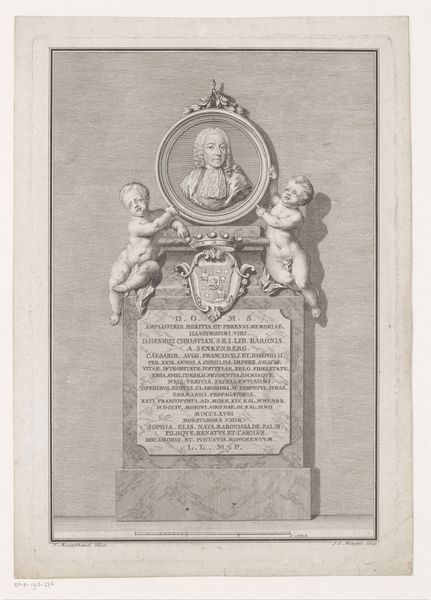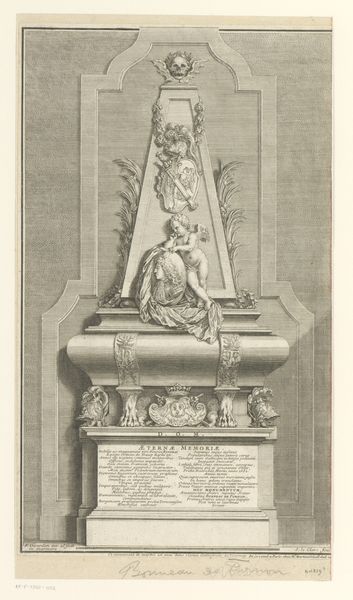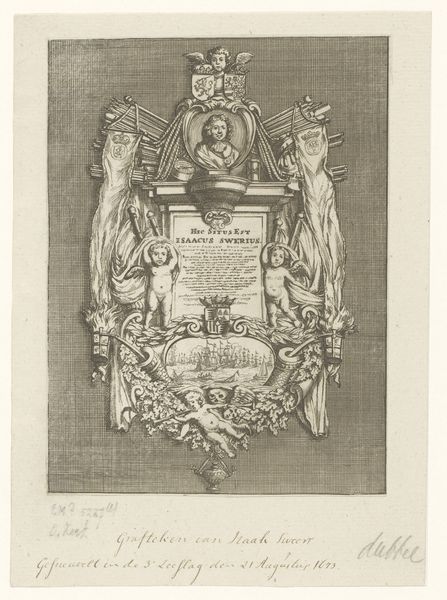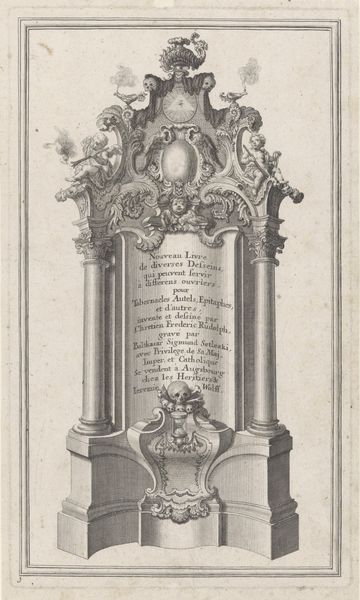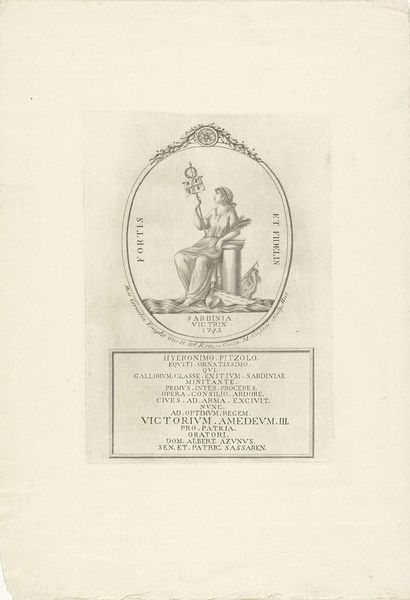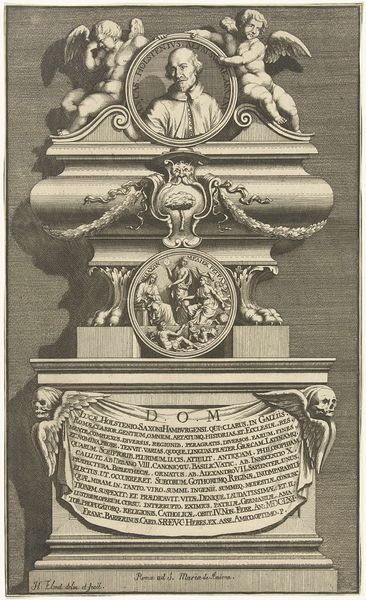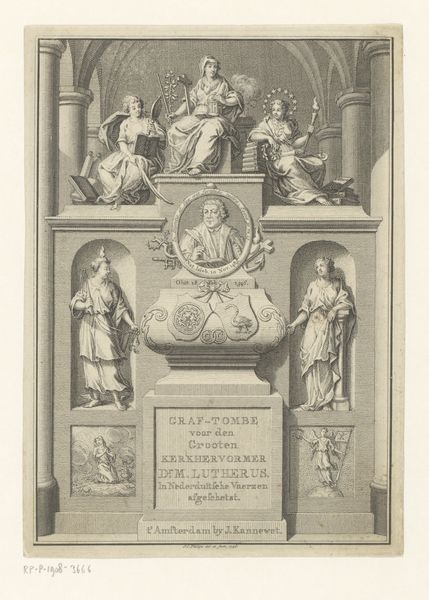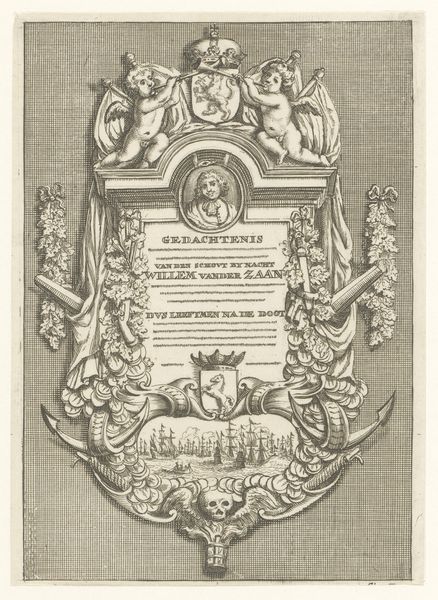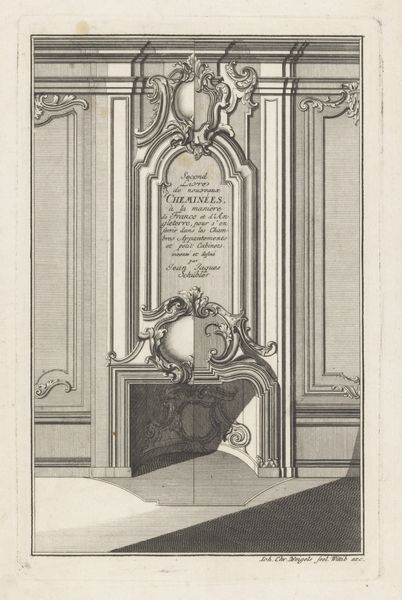
Dimensions: height 330 mm, width 213 mm
Copyright: Rijks Museum: Open Domain
Editor: Here we have Giovanni Volpato’s “Portret van anatoom Giovanni Battista Morgagni,” from 1763. It's an engraving, so a type of print. It’s very formal and ornate… all those flourishes give it a real sense of importance. What's your take? Curator: The image functions as a potent symbol of institutional authority and the rising status of science. Morgagni was a renowned anatomist, and this print, likely commissioned to celebrate him during his lifetime, reveals a fascinating interplay between art, science, and the construction of fame. Notice how the portrait is framed, not just literally with the wreath, but also within the context of his scholarly contributions proclaimed in the inscription below. Editor: So it's like a monument in print form? A way to disseminate his image and achievements more widely? Curator: Precisely. Consider the medium itself – engraving. It allows for mass reproduction, democratizing access to Morgagni’s image and reinforcing his legacy within learned circles and beyond. The inscription also elevates him within the 'republic of letters' which connected intellectuals transnationally through print culture. Editor: I hadn’t thought about it that way, about print as a social tool for reputation-building. It makes you wonder about the role the Rijksmuseum plays today in maintaining or reshaping reputations too. Curator: Absolutely. Museums are not neutral spaces. By displaying and interpreting works like this, we are actively participating in the ongoing construction of cultural memory and validating these historic individuals in society.
Comments
No comments
Be the first to comment and join the conversation on the ultimate creative platform.
